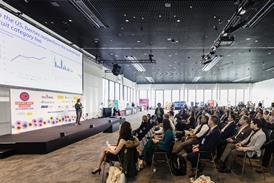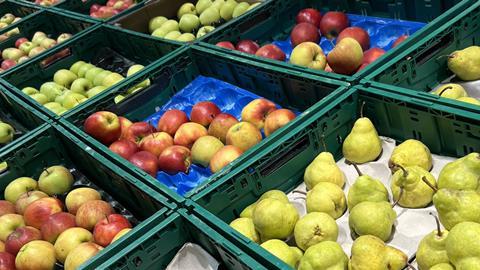The six leading apple suppliers in the Southern Hemisphere will produce more and export more as a group in 2024, but the story is different for pears
The six leading topfruit suppliers in the Southern Hemisphere expect to produce a combined crop of just under 4.78m tonnes of apples in 2024, up 1.1 per cent on last year, according to a new forecast released by the World Apple and Pear Association.
The group, which made the prediction during its annual meeting at Fruit Logistica in Berlin, also said it anticipated a 2.3 per cent annual decrease in pear production this year to almost 1.47m tonnes across the same six nations – Argentina, Australia, Brazil, Chile, New Zealand, and South Africa.
For apples, South Africa remains the group’s largest producer with 1.4m tonnes (+4.6 per cent), followed by Brazil (1.1m tonnes, equal), Chile (912,000 tonnes, -8.4 per cent), New Zealand (557,871 tonnes, +14.7 per cent), Argentina (501,000 tonnes, -4.8 per cent), and Australia (308,000 tonnes, +5.8 per cent).
Gala dominates the Southern Hemisphere crop with 1.58m tonnes, a figure which is in line with 2023 but 11.4 per cent below the three-year average.
Exports are expected to rise by 8 per cent to 1.55m tonnes, driven by increases of 5.1 per cent to 572,280 tonnes in South Africa and 5.3 per cent to 493,000 tonnes in Chile.
Exports from New Zealand should also grow, by 22.2 per cent to 381,729 tonnes. But they are forecast lower in Argentina (70,000 tonnes, -4.1 per cent) and Brazil (32,000 tonnes, -10.6 per cent).
European apple stocks stood at 3.85m tonnes of 1 January 2024, which is 4.6 per cent lower than at the start of 2023.
However, stock figures were higher in the US at around 2.14m tonnes, up 33.6 per cent compared with the previous year.
Pears back
Pear growers in Argentina, Chile and Australia all expect a decrease in production, to 614,000 tonnes (-6 per cent), 203,000 tonnes (5.4 per cent), and 72,000 tonnes (2.7 per cent) respectively.
South Africa’s output is set to increase, however, to 567,334 tonnes (+3.4 per cent), as is New Zealand’s to 9,066 tonnes (+8.4 per cent).
Packham’s Triumph remains the most produced variety (508.000 tonnes, -1.3 per cent), followed by Williams’ Bon Chrétien (300,082 tonnes). Export estimates are in line with last season, at just over 654,300 tonnes.
European pear stocks at 1 January 2024 were 4.4 per cent lower year on year at 582,587 tonnes. Again, stock figures were higher in the US at 169,474 tonnes (+14.9 per cent on 2023).
Correa move
At the meeting, Wapa named Jeff Correa of Pear Bureau Northwest (US) as its new president. He takes over the role from Dominik Woźniak of Rajpol (Poland). It also confirmed the appointment of Hortgro’s Nick Dicey at its new vice-president.
Correa commented: “I’m honoured that I have been elected as the next chairman of WAPA. I look forward to working with the Wapa staff and membership to advance data sharing and market insights, and explore new avenues that will benefit the organisation and its members.”
The next edition of Prognosfruit, Europe’s annual meeting point for the apple and pear business, will be held in Budapest, Hungary, on 7-9 August 2024.
Wapa’s annual report was compiled with the support of CAFI (Argentina), APAL (Australia), ABPM (Brazil), Fruits from Chile (Chile), New Zealand Apples and Pears (New Zealand), and Hortgro (South Africa).







